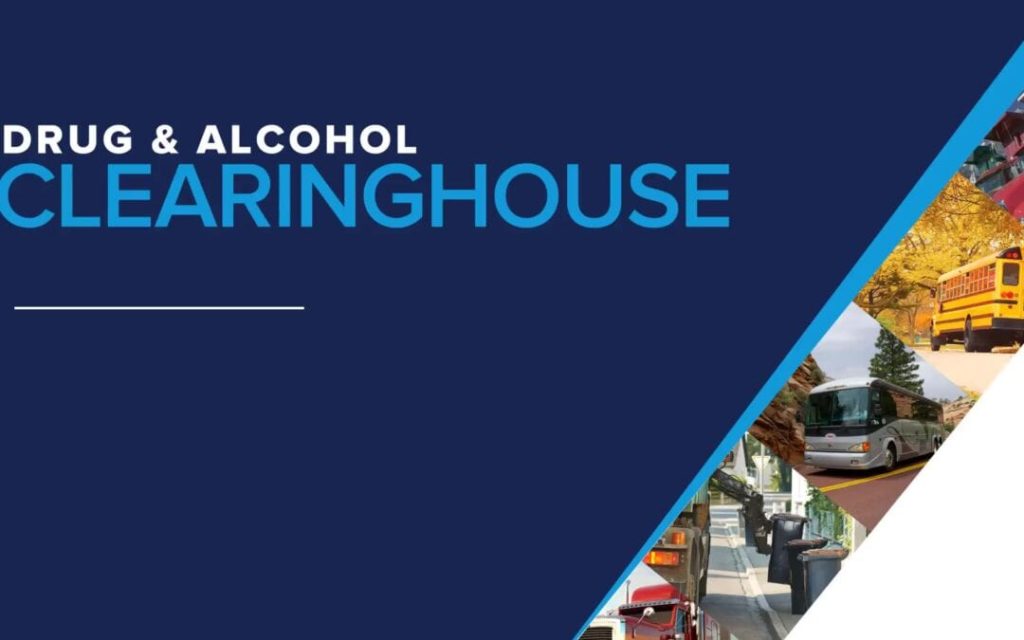In January, the Federal Motor Carrier Safety Administration’s (FMCSA) Commercial Driver’s License Drug and Alcohol Clearinghouse took effect. For those of you looking to get into the field of truck driving, we will attempt to summarize what it all means.
For starters, the Clearinghouse was designed to identify drivers who fail an alcohol or drug test while employed by a carrier, or are looking to obtain a CDL. In the past, a driver could relocate to another state, or move to another unsuspecting carrier, before their record caught up with them.
The Omnibus Transportation Employee Testing Act of 1991 requires certain transportation drivers to undergo drug and alcohol testing by the United States Department of Transportation. However, its guidelines only mandate background checks of potential employees for drug and alcohol violations for a three-year period.
The FMCSA Drug and Alcohol Clearinghouse (DAC) is a database of D.O.T. administered drug and/or alcohol test results. It contains all violations that occur on or after January 6, 2020 and includes results with a BAC over .04, positive drug test results and refusals to test. These violations stay in the database for a five-year period or until the driver completes the return-to-duty process, whichever is later.
Why is FMCSA implementing these strict measures? Simply put, for safety reasons. Commercial drivers are tasked with heavy loads in large vehicles that need to be delivered in a timely manner. Obviously, being under the influence of drugs or alcohol affects driving skills. Alcohol impacts your reaction time, your coordination, concentration, vision, and overall judgment. Driving under the influence of alcohol is responsible for approximately 30 deaths every day in the US.
Likewise, drugs cause impairment in a variety of ways, depending on the drug. The National Institute on Drug Abuse notes that opioid use, for example, doubles the risk of having a crash. Clearly this is a concern for the industry, and the public at large.
So, what does all this mean for a new student?
SAGE Students must register with the DAC as soon as they have their CDL Permit. Students will be required to give electronic consent through the Clearinghouse website in order for SAGE to do a full query of a student’s DAC record. You may not operate a truck in training on public roads until the DAC consent and query is complete and you’ve been approved. Keep in mind, if you decide to stay in the trucking industry, DAC inquiries will be a routine part of the hiring process.
The registration is not overwhelming, or complicated, and can be accomplished fairly quickly during the enrollment process at SAGE. You simply need a valid email address to confirm your registration. Providing you have that, we can help you with the rest.
Once you are registered, your information is stored in the Clearinghouse by your date of birth and (eventually) your CDL number. Any time data on you is added or changed in it, you’ll be notified by mail or through electronic notification. The Clearinghouse website contains numerous resources for drivers, including FAQs about the FMCSA program and a detailed brochure. You can find links, and more info about that on our website at https://sageschools.com/clearinghouse
Note: Marijuana is illegal in the trucking industry, even though it is legal in some states. Use of marijuana can be detected in a urine test, for over 30 days. Alcohol can show up in a blood test for up to 12 hours or be detected in urine for up to 3-5 days. The effects of opioids may only last for several hours, but the urine tests can detect cocaine for up to two days and heroin up to seven days after the last use. Don’t let substance be the reason your future career in trucking ends before it even begins.

